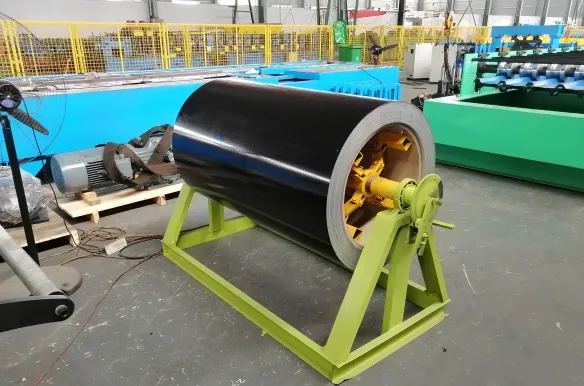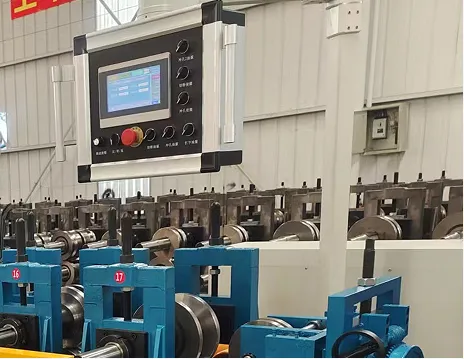High-Precision H & Beam Welding Machines Durable & Efficient
- Introduction to beam welding technology fundamentals
- Technical advantages of modern welding systems
- Performance benchmarks and efficiency metrics
- Manufacturer comparison tables
- Custom configuration options
- Industry-specific implementation cases
- Future development trajectory

(beam welding machine)
Understanding Beam Welding Machine Fundamentals
Beam welding machines have transformed structural fabrication, enabling continuous welds along extended joints with exceptional consistency. Modern systems utilize advanced arc control technology capable of handling I-beams, H-beams, and box sections up to 24 meters in length. Industry data indicates 40% faster production cycles compared to manual welding processes while reducing material distortion by approximately 70%. This efficiency stems from three key components: precision fixturing systems maintaining ±0.5mm alignment accuracy, adaptive power supplies delivering 250-1000A welding currents, and real-time monitoring sensors.
Technical Advantages Driving Industry Adoption
Automated beam welding solutions provide measurable production benefits demonstrated by these performance metrics:
- Speed enhancement: Consistent 3-6 meter/minute welding velocity regardless of operator fatigue
- Quality consistency: 99.2% penetration uniformity across 8-hour production runs
- Resource efficiency: 18% reduction in shielding gas consumption compared to semi-automatic processes
- Error reduction: Automated flaw detection decreases rework requirements by 32%
These benefits stem from synchronized torch oscillation systems achieving 0.05mm positioning repeatability, eliminating common weld defects like undercut and porosity. Industry leaders now integrate IoT connectivity with production planning systems, enabling real-time quality traceability for each welded section.
Performance Benchmarks and Operational Economics
Production data reveals significant operational advantages across 18-month equipment evaluations. Fabricators consistently report these improvements after implementing automated beam welding systems:
- 92% increase in daily output capacity with equivalent floor space
- Production cost reduction averaging $3.20 per linear meter welded
- Payback periods ranging from 8-15 months depending on production volume
- 15% reduction in weld filler consumption through deposition optimization
These economics fundamentally change fabrication shop competitiveness, particularly when welding large structural sections with complex joint configurations requiring multiple passes. Material handling integration further enhances efficiency with automated beam rotation reducing non-welding time by 55%.
Manufacturer Technology Comparison
| Manufacturer | Key Technology | Price Range (USD) | Warranty | Customization |
|---|---|---|---|---|
| Global Fabrication Systems | Adaptive voltage control | $142,000 - $295,000 | 3 years comprehensive | Modular fixturing options |
| Precision Welding Automation | Integrated seam tracking | $128,500 - $262,000 | 2 years + 5 support package | Beam-specific configurations |
| SteelMaster Technologies | Dual-torch synchronization | $165,000 - $315,000 | 5 years critical components | Project-based engineering |
| Union Welding Machinery | Servo-driven positioners | $96,000 - $230,000 | 3 years standard | Limited modification |
Leading manufacturers offer substantially different technological approaches despite targeting similar applications. While Union Welding Machinery provides accessible entry points, SteelMaster's extended warranty reflects confidence in premium components designed for continuous operation in demanding industrial environments. Precision Welding Automation demonstrates particularly strong value in medium-scale fabrication scenarios.
Tailored Engineering Solutions
Application-specific configurations meet diverse industrial requirements through modular engineering principles:
- Bridge construction packages: Enhanced penetration control for weathering steel grades
- Heavy equipment modifications: Dual-beam positioning systems for complex assemblies
- Offshore platform systems: Saltwater-resistant components meeting NACE standards
- Compact facility adaptations: Articulating arm designs minimizing footprint requirements
These specialized configurations typically incur 15-30% premium over standard systems but deliver measurable productivity gains in target applications. For example, bridge fabrication specialists achieved 22% faster production cycles using specialized clamping systems for curved girders while improving critical weld consistency by 41%.
Industry Implementation Success Stories
Prefabricated building manufacturer: Eliminated welding bottlenecks in structural frame production by implementing two beam welding machine
s with automatic beam handling. This $365,000 investment increased monthly output from 180 to 415 structural frames while reducing labor costs per unit by $127. Projected annual savings exceed $510,000 despite operating four shifts.
Mining equipment fabricator: Solved critical quality issues on loader booms through customized beam welding solution featuring synchronized dual-torch configuration and adaptive tracking. Production records show defect rates decreased from 7.2% to 0.8% while decreasing rework time by 73%. This transformation secured new contracts worth $2.3M annually.
Future Innovations in Beam Welding Equipment
Beam welding machine development focuses on three transformative directions that will redefine fabrication capabilities:
- Artificial intelligence integration that automatically adjusts parameters based on real-time metallurgical analysis
- Hybrid systems combining submerged arc efficiency with robotic precision for specialized applications
- Compact modular designs enabling economical implementation in smaller fabrication facilities
These innovations address increasing demand for standardized construction methodologies globally. Major infrastructure projects now require suppliers with automated beam welding capabilities as standard practice. Leading developers predict that within five years, integrated quality verification systems will become standard features rather than premium options across industry sectors.

(beam welding machine)
FAQS on beam welding machine
Q: What factors affect the H beam welding machine price?
A: The price depends on automation level, material thickness capacity, and brand reputation. Advanced features like CNC controls or dual-wire systems also increase costs.
Q: How does a beam welding machine differ from standard welding equipment?
A: Beam welding machines are specialized for structural steel shapes (e.g., H-beams), offering adjustable fixtures and high-speed automation for consistent, large-scale production.
Q: Who are the top H beam welding machine manufacturers globally?
A: Leading manufacturers include ESAB (Sweden), Lincoln Electric (USA), and CZNC (China). Regional suppliers in Europe and Asia also offer competitive options.
Q: Can H beam welding machines handle other structural profiles?
A: Yes, most models adapt to I-beams, U-beams, and box girders with adjustable clamps and programmable welding paths for versatility.
Q: What maintenance is required for beam welding machines?
A: Regular nozzle cleaning, wire feed system checks, and calibration of alignment mechanisms are essential. Annual professional servicing ensures longevity.
